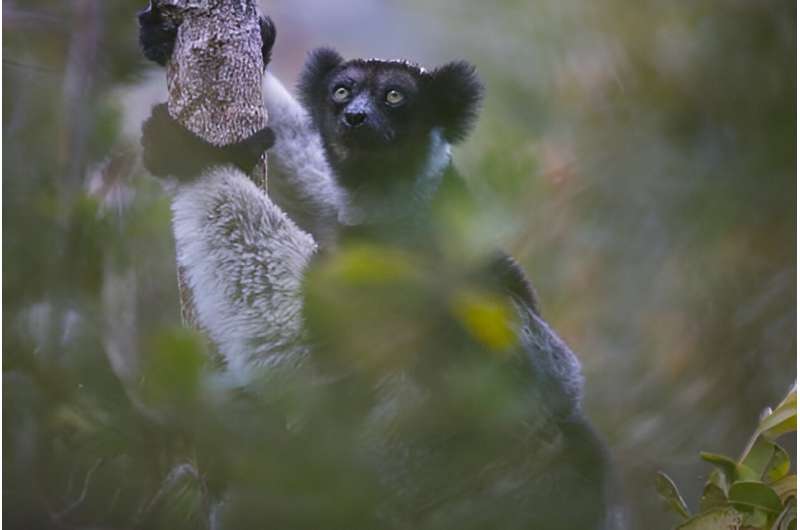This article has been reviewed according to Science X's editorial process and policies. Editors have highlighted the following attributes while ensuring the content's credibility:
fact-checked
trusted source
proofread
Lemur communication shows how humans evolved to create music

A type of lemur which communicates in rhythmic song shows how humans have evolved to create music, according to researchers at The University of Warwick.
Indris, known as "singing lemurs" live in small family groups in the Madagascan rainforest and communicate using songs, similar to birds and humans. They also use rhythmic vocalizations like alarm calls to alert family members of predators.
Researchers found that Indris have "isochrony" in their communication, which is where the time between sounds or notes are equal, creating a steady occurrence of events at regular intervals, resulting in a consistent rhythm or beat—much like in music. For example, in an isochronous pattern, each note or beat would be evenly spaced apart, like the ticking of a clock.
In the study, published in the journal Annals of the New York Academy of Sciences, the team based at the Universities of Warwick and Turin, recorded both Indris' songs and alarm calls (emitted in the presence of a predator) across various forest patches in Madagascar, following free-ranging animals from 2005 to 2020.
Lead author Dr. Chiara De Gregorio, Department of Psychology, University of Warwick, said, "By isolating the notes and intervals between notes in 820 songs from 51 lemurs, we calculated the rhythmic ratios for each pair of consecutive intervals. A ratio of 0.5 signifies isochrony."
The analysis revealed that isochrony is present in all the songs and alarm calls, establishing it as a fundamental aspect of indri communication. Moreover, one song type exhibited three distinct vocal rhythms.
Dr. De Gregorio continued, "This discovery positions indris as animals with the highest number of vocal rhythms shared with the human musical repertoire—surpassing songbirds and other mammals."
These results suggest that elements of human musical attributes evolved early in the primate lineage. Given that alarm calls probably existed before more complex vocalizations like songs, isochrony might be an ancestral rhythm from which other rhythmic patterns evolved.
Dr. De Gregorio added, "Our study expands on previous work that identified two rhythms shared with human music. In this new research, we isolated a third rhythm and extended our analysis beyond songs to include other calls.
Dr. Daria Valente, Department of Life Sciences and Systems Biology, University of Turin, and co-author of the study, stated, "The findings highlight the evolutionary roots of musical rhythm, demonstrating that the foundational elements of human music can be traced back to early primate communication systems."
More information: Chiara De Gregorio et al, Isochrony as ancestral condition to call and song in a primate, Annals of the New York Academy of Sciences (2024). DOI: 10.1111/nyas.15151
Provided by University of Warwick





















